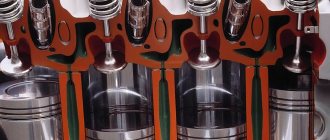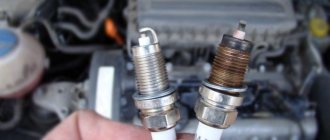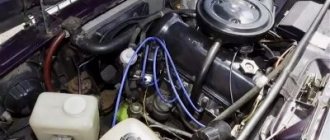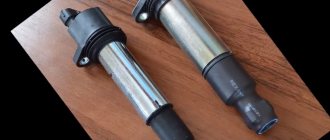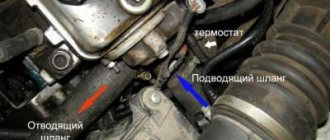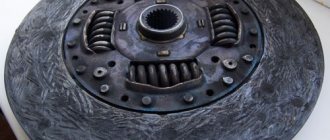It is useful for any fan of the domestic automobile industry to know the reasons why the Priora engine has 16 valves. After all, this problem is quite common. Ask any driver what the reason is, he will immediately give several options for the malfunction. And also ways to solve them. Of course, by interviewing many people you can find out all the reasons. But they still need to be checked. In addition, very often the cause of engine tripping can be several conditions at once. To ensure that the problem is resolved, you need to check all possible options. Only in this case will you get rid of this problem.
Causes and Effects
The reasons why the Priora 16 valve engine is tripping can be very diverse. Several systems are involved in the normal operation of the engine. Therefore, to identify the source of the problem, it is necessary to check the following systems:
- Supply system;
- Ignition;
- Sensors
Very often, it is on Priors with a 16-valve engine that the problem arises due to power problems. Therefore, you need to check it first.
The consequences of engine tripping can be the most unpleasant. Outwardly, this manifests itself as hassle. After all, the engine is unstable and shaking. Often the interior begins to smell of gasoline. Don't forget the money issue. The car noticeably increases its appetite and you have to visit the gas station much more often. It's much worse that it leads to more serious damage.
First, the fuel settles on the cylinder walls and seeps into the block, mixing with the oil there. Due to this, the lubrication of the unit deteriorates, and parts wear out faster. It is also possible for a water hammer to form if a sufficient amount of fuel accumulates in the cylinder. In the simplest case, the remaining working cylinders bear a large load. As a result, their elements fail earlier. In any case, it is necessary to eliminate this problem in a timely manner.
Before you begin more specific troubleshooting, perform diagnostics using a laptop. This will help you determine which cylinder is not firing. Typically, such errors are recorded in the memory of the engine control unit. Having determined where the flash skip occurs, start working.
Is it possible to drive a car if the engine is not working? Consequences.
One of the most common engine malfunctions is the failure of one or more cylinders. In this case, the engine idles unstably, increased vibration is observed, and an uneven sound of exhaust gases is heard from the exhaust pipe. But just based on these signs alone, it is impossible to reliably say that the engine is malfunctioning; to determine this malfunction, there is one reliable method, which almost all motorists know about. This is alternately turning off the cylinders and monitoring the engine speed. If, after we turned off the cylinder, the revolutions did not change, then this cylinder is not working. In the same way, you can determine the balance of torque among the cylinders, that is, the uniformity of their operation.
If we determine that one of the engine cylinders is not working, but at the moment for some reason we cannot correct this malfunction, then is it possible to continue driving the car, what harm can be caused to the engine.
In a four-cylinder engine, the load is divided between 4 pistons. If one of them stops working with everything or produces less torque, then the load is distributed over the other three. That is, if to maintain the required engine power, 25% of each cylinder was required, then if one stops working, these 25% are distributed among the others and the result is 33% for each. In order to maintain engine power at a certain level, you need to increase the torque in the remaining working cylinders; to do this, you need to supply more air-fuel mixture to them. Fuel consumption and load on them will increase. Therefore, prolonged driving with one cylinder not working increases engine wear.
But in order to understand what exactly can happen to a cylinder that is not working, you need to know what kind of malfunction has occurred in it. If, for example, a valve in it has burned out, then prolonged driving with such a malfunction can lead to the fact that as a result of the flammable mixture escaping through leakage, the seat can also burn out, and in the future you will have to not only replace the valve, but also possibly the head. That is, repairs will be much more expensive.
In modern engine management systems, the fuel supply from the injector to the idle cylinder is turned off. After all, if a large amount of unburnt fuel-air mixture gets into the catalyst, this can damage it. Some of the gasoline may condense on the cylinder walls and wash away the oil film, which will lead to increased wear and dilution of the oil. Therefore, if the controller program does not provide for turning off the fuel supply, then prolonged driving with an inoperative cylinder can lead to all of the above malfunctions.
If the cylinder does not work because the high-voltage wire or spark plug is faulty, this can lead to failure of the ignition coil. Therefore, in this case, it is also necessary to correct the malfunction as quickly as possible.
In general, the answer to the question of whether it is possible to drive a car if the engine is not working depends on what malfunction caused it. But in all these cases you need to move without putting high speeds and loads on the engine.
That's all, thank you for reading the article, if it was useful to you, like it and subscribe to the channel.
You can also read the following articles.
Source
Nutrition
A missed flash may occur due to the fact that there is simply nothing there to burn, that is, to flash. So first, start the engine. When it has been running for a couple of minutes, turn it off and remove the spark plug. If it turns out to be dry, then the reason is the lack of fuel. There may be several reasons for this situation:
- The most common cause of 16 valves on a Priora is damage to the injector winding. You can check this by removing the cover and manifold. Then measure the resistance on the injector winding; it should be within 15-15 Ohms. If it is faulty, it should be replaced. Read more about how to do this in the article “How to check an injector nozzle”;
- Another reason is a clogged injector. This usually happens when using low-quality fuel. You can also “clog” these engine elements yourself by pouring various cleaners into the tank. They partially destroy sediments. Which, in the form of a suspension, enter the injector, where they get stuck in the nozzles. To fix the problem, you need to flush the injectors. You can do this yourself without removing them from the engine.
Troubles the engine
Cars January 28, 2017
Despite the huge amount of criticism against the Lada Priora, this is one of the most popular cars that have come out of the AvtoVAZ assembly line in recent years. The Priora is equipped with a fairly successful engine with good dynamics, and the interior is very comfortable.
And the maximum trim levels offer useful options. But at the same time, from time to time the car brings minor problems to its owners. One of the most popular malfunctions is that the Priora engine (16 valves) is tripping. The reasons for this phenomenon are quite unpleasant.
And besides, the motor eventually overheats.
When the driver starts his car in the morning, the engine does not run smoothly as before, but intermittently. At this time, dull sounds are heard from the exhaust pipe. At the same time, a persistent and strong smell of unburned fuel is felt. Vibrations are constantly increasing, and this is fraught with cracks in the pillows. This is how the engine runs when cold.
Trouble the engine: why is it dangerous?
Considering that the Lada Priora has been manufactured since 2007, there are often instances where the engine knocks like on an old car 20 years ago. This is an engine running on three cylinders. It may have the latest firmware, but if the engine of a Lada Priora car is running rough and the check light is on, then such a car will not have much life left.
Supply system
If the Priora engine (16 valves) is tripping, the reasons may be trivial. When there is no flash in the cylinder, perhaps there is simply no fuel there. If it has a normal compression ratio, it is worth diagnosing the power system. You should pay maximum attention to the air filter and the pipe.
It is necessary to make sure that the clamps are securely tightened, whether the purifier body itself is intact, and whether there is any air leakage from the outside
Also pay attention to the tubes. They must be tightly secured to the throttle assembly
Fuel leaks, cracks, and broken plastic may indicate that some parts are faulty.
When the Priora engine (16 valves) fails, the reasons often lie in the injector.
Injector winding
It can not only become clogged with dirt - often the windings of the elements burn out on Priors. In this case, the situation can be easily restored with your own hands. The cover is removed, and then the manifold. Next, the injector windings are checked. Using a multimeter, measure the resistance of the windings. It should be around 11-15 ohms. If the indicators are lower, the element should be replaced.
How to troubleshoot injector problems?
If the resistance is normal, then it is recommended to completely dismantle the fuel rail and thoroughly wash each part. You should not perform this operation if you have no experience in this work. To flush, the nozzle valves must be opened. Then apply aerosol washing there under pressure. It's not difficult, but without experience you can ruin everything.
Diagnostics of spark plugs by plaque
When the engine starts cold or hot, you can check the carbon deposits on the spark plugs. If the coating is white, then this indicates a lean mixture and overheating of the engine. A black tint indicates a rich mixture. In both the first and second cases there are problems with the operation of the electronics. This is either installing new firmware, or replacing the ECU.
A normal candle has a brick color. By the way, the engine may stall at idle if the part is damp. This also significantly increases the warm-up time. In addition to the spark plugs, the ignition coil may also be acting up. Priora (8 valves) is equipped with distributor ignition. Overheating of the coil is often observed.
You can restore the operation of the motor by simply replacing the element.
Summary
So, we looked at why the car is tripping. These are not all possible reasons, but they help to accurately diagnose the operation of the motor and find the malfunction.
Ignition
But it may turn out that when you unscrew the spark plug, you will see that it is wet. This indicates there is no spark. As a result, fuel combustion does not occur. The ignition is checked in the following order:
- First, let's visually evaluate the candle. It should be brown-sand color. If it is darker, then it may be faulty. It is advisable to check it on a special stand. The spark should be blue and white. If it is yellow or red, then this is a bad sign. You can, of course, try to clean it with sandpaper, but this may not bring the desired effect;
- Try using another spark plug and check how the engine runs. If everything returns to normal, then the cause has been found. Also check the high voltage wire;
- After this, check the ignition coil. It is the weakest ignition part in the Priora. To check, we reset errors from the ECU. And with the ignition off, they swap the supposedly non-working ignition coil with the obviously working one. The engine starts for a couple of minutes. The diagnosis is repeated. If the flash miss “migrated” along with the coil, the problem is in it. Replace it with a new one.
Sensors
Engine friction can be caused by 2 sensors. One of them is the idle speed sensor. If he makes a mistake, the engine will stall when cold. After warming up everything returns to normal. The problem may also be caused by the crankshaft position sensor. Usually the problem with it is visible during diagnosis.
Conclusion
. There are many engine-related malfunctions. At the same time, even seemingly harmless ones can cause a bunch of other problems. Therefore, it is important to know all the reasons why the Priora 16-valve engine triples. This will help you quickly eliminate the problem, which significantly reduces engine life. It also brings closer the need for major repairs.
After the races, such nonsense began: at idle the car was shaking, the exhaust was dark (as if it was overflowing) BUT the check light did not light up. Fuel consumption is probably 30 liters per 100. I unscrewed the spark plugs - the carbon deposits are just crazy - the spark plugs are all black. I changed the spark plugs and installed Bosch platinum - no effect =( The engine doesn’t stall at speed, but when you sharply let off the gas, it almost stalls. The revs drop to 400-500 until you rev it up... I turned off the mass air flow sensor - a slight drop in revs for a split second - then it continues to stall. Who? what can you recommend?
PS I myself understand perfectly well that you need to go for diagnostics =) I just want to listen to advice - you never know who has had such a sore...
see also
Comments 12
it was about the same thing, the oxygen sensor died! just unplug the plug and check if it works or not. but the check engine light comes on!
This happened to me: the coil died, the next day I replaced it with a new one, but the black smoke due to overflow never stopped coming out of the exhaust pipe. I unscrewed the spark plugs, they were covered in black soot, replaced them with new ones, it didn’t help. Then I unscrewed the oxygen sensor, and it was also very heavily carbonated. After replacing the DC everything became normal.
Checking the ignition coil - Disconnect the ground wire from the battery. — Remove the cover from the ignition coil and disconnect the wire from it. — If the plug comes out of the coil, replace the coil. — Check the coil for cracks, replace if necessary. — Measure the resistance of the primary winding of the coil by connecting an ohmmeter to the contacts. — Measure the resistance of the secondary winding of the coil by connecting an ohmmeter to the contacts. — Connect the wires to the ignition coil. — Install the coil cover. — Connect the ground wire to the battery. If you are going to replace the ignition coil, do not install a regular coil controlled by the ignition chopper under any circumstances, otherwise the control computer will be damaged.
Many Lada Priora engine owners have experienced the engine starting to misfire. What are the reasons for this effect? Let's consider the main ones, as well as methods for troubleshooting.
Engine diagnostics
Why does the Lada Priora engine stall? Before proceeding with the analysis of the mechanical part of the fault, many owners and mechanics recommend conducting computer diagnostics of the car. Maybe you really shouldn’t go into the mechanical part and look for faults there, but just look at what the electronic engine control unit shows in this case.
So, for computer engine diagnostics you will need a vehicle connection cable (OBD II), a laptop or tablet, and the appropriate software.
Having connected and synchronized with the car, we diagnose the condition of the engine, and also analyze the errors that it generated. Based on this information, you can understand whether all sensors are working properly, and whether there are problems in the software.
The next step is to check the engine sensors using a tester. They are diagnosed by ringing the contacts to see if they are working in the on-board network and if there is an impulse that goes to the ECU. So, what sensors need to be checked:
- Coolant temperature sensor.
- Mass air flow sensor.
- Idle speed regulator.
- Knock sensor.
- Crankshaft position sensor.
If any of these meters fails, it must be replaced. After this, it is recommended to reset all errors that were detected in the control unit. The electronic procedure is completed.
System malfunctions
If it was not possible to detect a malfunction in the electronic part, then it is necessary to move on to analyzing the mechanics. Thus, the occurrence of the tripling effect is influenced by one of three systems - air, fuel and spark. Typically, engine tripping is caused by a lack of spark, but other systems can also affect the course of events. Therefore, it is worth checking each system separately.
Sparking
In this case, we are talking about failure of spark plugs or high-voltage wires. Checking these elements is quite simple. First you need to remove the wires from the car. To do this, you need to pull out the tip of the wire from the spark plug, and the second from the ignition coil. Then, using a spark plug wrench, unscrew the spark plugs from the block head.
Diagnosis of spark plugs is quite simple. First, you should inspect the part for cracks or damage. Clean the contacts with a cloth if they are dirty and install the spark plug back.
The high-voltage wire is checked using a resistance tester. First, each product is checked for insulation breakdown.
Fuel supply
Three parts play a role in the quality process of fuel supply: pump, filter and nozzles. To begin with, it is worth diagnosing the latter. To do this, they are dismantled from the car and installed in a special stand, which will show how suitable the parts are for further use. After this, it is worth carrying out the cleaning procedure.
The next thing to check is the fuel pump. It is located in the fuel tank, and can only be reached from the passenger compartment by first removing the rear sofa. After this, the power and fuel lines are turned off. Then, you need to take the fuel pump out and inspect the filter mesh. If it is dirty and clogged, then it should be replaced.
In the case of the fuel filter element, everything is simple - change it. This part is not dismountable and it is not possible to accurately determine its condition.
Air supply
Another system without which ignition of the air-fuel mixture is impossible. To begin with, it is worth dismantling the air filter element (air filter) and inspecting its condition. If it is too dirty, it should be replaced.
In addition to the air filter, it is worth inspecting the condition of the throttle valve. An element that is too dirty may jam and prevent air from passing normally into the combustion chamber. So, to clean it, you should first dismantle it and then clean it with carburetor cleaning fluid.
Also, after removing the throttle, it is recommended to clean the air corrugation, which supplies air to the damper and the mass air flow sensor. The air flow sensor is equipped with an indicator mesh, which allows air to pass through and regulates the amount required for combustion.
A clogged element may result in incorrect readings. The damper, in turn, will not close to the desired position, which will lead to excess air in the combustion chamber.
